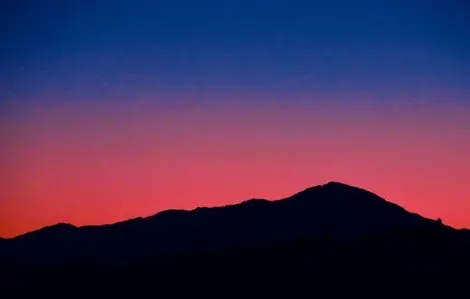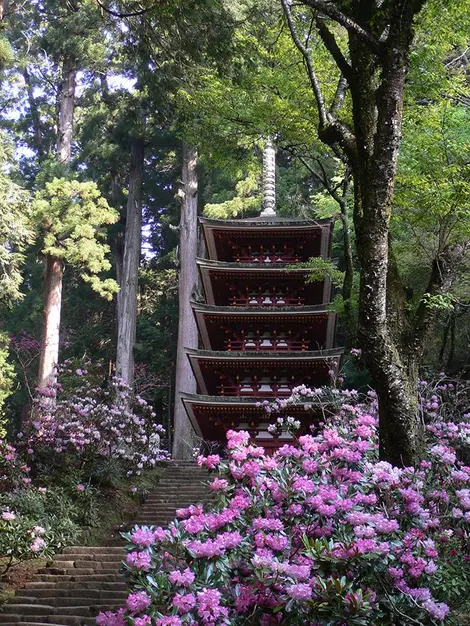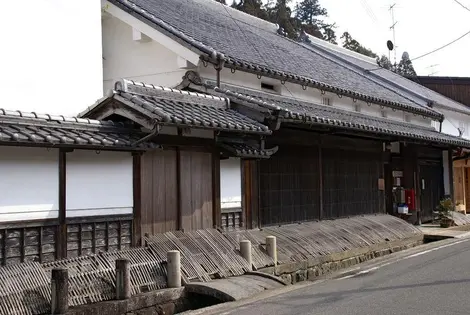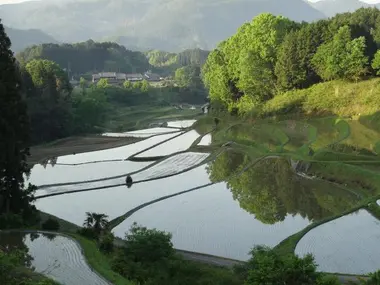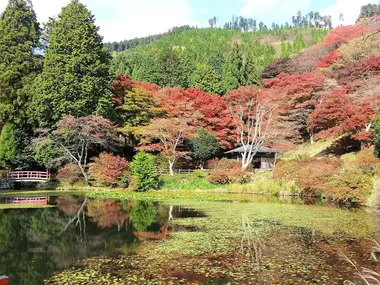uda 宇陀市
- Published on : 20/03/2018
- by : S.V.
- Youtube
Open air
In the northeast of Nara prefecture, in the beautiful and peaceful Japanese countryside, the city of Uda offers a magical getaway 1 hour from Osaka and 40 minutes from Nara. In a splendid green setting on the Yamato plateau, this historic city is a plunge into classic rural Japan. An exciting visit off the beaten track!
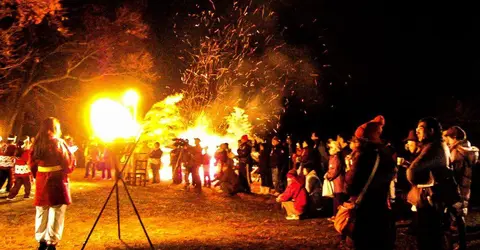
Festivities accompany the kagirohi
koza5555.exblog.jp
ancient cities
The municipality of Uda was born in 2006 from the merger of four historic towns : Ouda, Utano, Haibara and Muro. Several poems from Man'yôshû, an anthology of thousands of waka poems ( traditional poetry ) from the Asuka period (538-710), documents the culture and history of the four cities. A waka by Hitomaro Kakimoto written in 692 is an ode to the beauty of the sky by Akino (former name of Ouda): "I saw the light in front of the rising sun before sunrise, looking back (in the direction of west) the moon was bending". These few verses are an invitation to admire the beauty of dawn and the disappearance of the moon. This brief moment when the light in the sky turns red to purple shortly before sunrise is called kagirohi . Every year on the anniversary date of the writing of the poem (the 17th day of the lunar calendar), under the leadership of the Uda tourist association, everyone can come and experience this spectacle as it was described 1,300 years ago. . At Kagirohi no OkaManyo Park , between 4am and 7am, the waka landscape emerges before your eyes. This ephemeral show of barely ten minutes is accompanied by conferences, mini-concerts and outdoor exhibitions.
Ouda(大宇陀)
Ouda is a memorable visit for history buffs . Former imperial hunting ground, the city developed during the Sengoku period (1450-1573) around the castle of Uda-Matsuyama which was destroyed by the Tokugawa clan in 1615. From the hill where some remains remain, the view is unobstructed view of the city and the surrounding mountains. In the district of Hongo, stands a 300-year-old cherry tree. Nearly 14 meters high, the Matabei-zakura owes its name to Goto Matabei, a military commander at the start of the 16th century. The nostalgia-filled historic district of Uda-Matsuyama retaining many buildings from the Edo period (1603-1868) was designated the " Country's Traditional Building Preservation District " in 2006. The Morino Herbal Garden, which includes more than 250 species and the Kusuri no Yakata, a museum of the history of medicine installed in the former home of a wholesaler in pharmacies who later became the founder of a large pharmaceutical company, remind us that the city is considered the cradle of modern medicine .

The century-old cherry tree, Matabei-zakura
Coniferconifer / Wikimedia
Utano (菟田野)
The Utano area was known in ancient times for its thriving timber, fur and leather industries. Its Uta Mikumari shrine, classified as a National Treasure , dates from the Kamakura period (1185-1333). Every year since the 9th century, it has hosted the autumn festival on the third Sunday of October. During it, the people of Utano compete in a performance while carrying large taikodai (floats on which the taiko, Japanese drums, are placed). Utano is also well known for its Hirara Maple Park, which preserves 1,200 species of maples from around the world.
Read also: Typical objects of Japanese craftsmanship
Haibara (榛原)
The natural landscapes of Haibara ( mountains, forests, rice fields ) are of incredible beauty. Notice to hiking enthusiasts, Haibara is for you! Among the many hiking trails in the area is the ascent of Mount Torimiyama . From its summit, in a park of the same name, the view of the city and the dense forest is simply fantastic. The park where thousands of azaleas bloom in early summer is conducive to rest and relaxation. The small temple in the middle of the pond accentuates the picturesque charm of the place.
To read: The best hikes to do in Japan
For the less sporty among you, the Aburaya, a three-hundred-year-old inn , located 10 minutes from the station and at the convergence of two pilgrimage routes, makes you discover the local history . Butsuru Temple, founded in 850 , is the must-see place for lovers of beautiful flowers . Not content with adorning itself with a multitude of red amaryllis in September, it also hosts within its walls the Sennen-zakura, a cherry tree that is said to be 900 years old!
See also: 16 amazing numbers about cherry trees
Muro (室生)
The famous temples and shrines of Muro are the pride of its inhabitants. The Muro-ji , nicknamed "the Koya-san of women" houses the smallest five-storey pagoda in Japan. The Ono-ji preserves one of the largest Buddhas carved in rock . The immense Magaibutsu, 14 meters high, dates from the Kamakura period (1185-1333). The Muro-ryuketsu shrine is dedicated to the deity of the Dragon , celestial attribute of climate and water. Beware because in his Dragon Cave, Kissho Ryuketsu, several dragons live! Finally, if you feel like resynchronizing yourself with nature and its elements, know that the Muro Art Forest is made for that! This park created by contemporary artist Dani Karavan follows the precepts developed by Bukichi Inoue (1930-1997), a sculptor from Muro, according to which sculptures must harmonize with nature.
Address, timetable & access
Address
Phone
+81 (0)745-82-8000Timetable
From Osaka: Kintetsu Osaka line (1h)From Nara: Kintetsu Osaka and Kintetsu Nagoya lines (40min)




